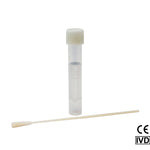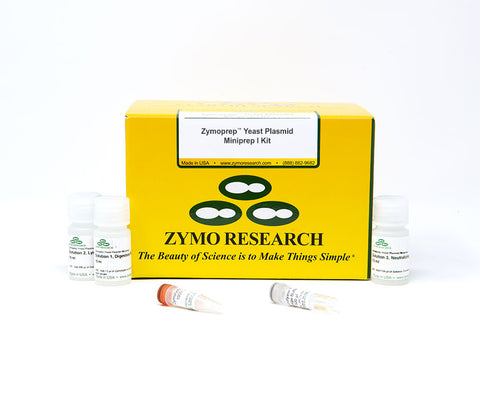Successfully Added to Cart
Customers also bought...
-
 DNA/RNA Shield (50 ml)Cat#: R1100-50DNA/RNA Shield reagent is a DNA and RNA stabilization solution for nucleic acids in any biological sample. This DNA and RNA stabilization solution preserves the...
DNA/RNA Shield (50 ml)Cat#: R1100-50DNA/RNA Shield reagent is a DNA and RNA stabilization solution for nucleic acids in any biological sample. This DNA and RNA stabilization solution preserves the... -
 DNA/RNA Shield SafeCollect Swab Collection Kit, 1ml (1 collection kit)Cat#: R1160The DNA/RNA Shield SafeCollect Swab Collection Kit is a user-friendly collection kit for stabilizing the nucleic acid content of samples collected with a swab. DNA/RNA Shield completely inactivates harmful pathogens...
DNA/RNA Shield SafeCollect Swab Collection Kit, 1ml (1 collection kit)Cat#: R1160The DNA/RNA Shield SafeCollect Swab Collection Kit is a user-friendly collection kit for stabilizing the nucleic acid content of samples collected with a swab. DNA/RNA Shield completely inactivates harmful pathogens...

Satisfaction Guaranteed
Read The Zymo Research PromiseZymoprep Yeast Plasmid Miniprep I
| Cat # | Name | Size | Price | Quantity |
|---|
Highlights
- Simple: Quickly and easily rescue plasmid from yeast.
- Efficient Isolation: Works well with low-copy and hard to isolate plasmids.
- High-Quality: Isolated plasmid DNA is ideal for molecular biology techniques, such as PCR, transformation, hybridization, etc.
Product Description
Technical Specifications
| Applicable For | Plasmid DNA is well suited for downstream applications such as PCR, transformation, hybridization and other sensitive applications |
|---|---|
| Elution Volume | ≥ 35 µl |
| Equipment | Microcentrifuge & Heat Block/Bath |
| Processing Volume | ≤ 1.5 ml of Culture |
| Sample Source | Cell Culture (Colonies/Patches or Liquid Culture) |
| Size Range | No Size Limit |
| Yield | Typically between 0.01-0.3 ng for most 2 µ based plasmids from 1.5 ml overnight cultures |
Resources
Q1: What is the difference between Zymoprep Yeast Plasmid Miniprep I and Miniprep II?
Both the Zymoprep Yeast Plasmid Miniprep I and II utilize the same chemistry for lysis; however, Miniprep I uses isopropanol precipitation and Miniprep II utilizes a column for purification. The Miniprep II allows for consistent yield and purity; and samples can be concentrated to a low elution volume.
Q2: What is the typical plasmid yield?
Typically, between 0.01 - 0.3 ng for most 2 µ based plasmid from 1.5 ml overnight cultures. In order to generate more plasmid, the plasmid is typically transformed into E. Coli , cultured, and isolated using a traditional E. Coli plasmid prep.
Q3: Can this kit be used to isolate linear plasmid DNA?
Yes
Q4: If I’m using stationary phase yeast cells, what can I do to improve sample lysis?
We generally recommend working with fresh or early log phase cells, which are easier to lyse. For stationary phase cells, user optimization is necessary, and we recommend increasing digestion to > 1 hour and/ or increasing the amount of Zymolyase.
Q5: What strains are these kits compatible with?
Any strains susceptible to Zymolyase, which includes the following fungal genera: Asbya, Kloekera, Candida, Kluyveromyces, Debaryomyces, Lipomyces, Eremothecium, Metschikowia, Endomyces, Pichia, Hansenula, Pullularia, Hanseniaspora, Saccharomyces, Saccaromycodes, Saccharomycopsis, Schizosaccahromyces, Torulopsis
| Cat # | Name | Size | Price | |
|---|---|---|---|---|
| D2001-1-15 | Solution 1 Digestion Buffer | 15 ml | €21,40 | |
| D2001-2-15 | Solution 2 Lysis Buffer | 15 ml | €21,40 | |
| D2001-3-15 | Solution 3 Neutralizing Buffer | 15 ml | €21,40 | |
Need help? Contact Us

